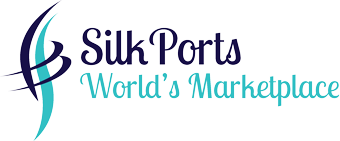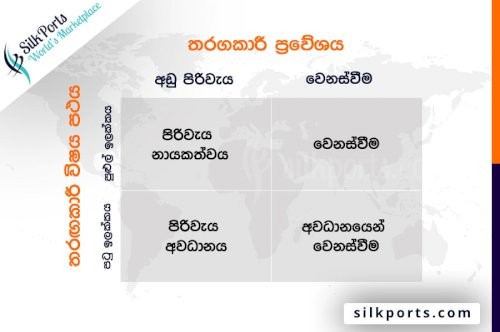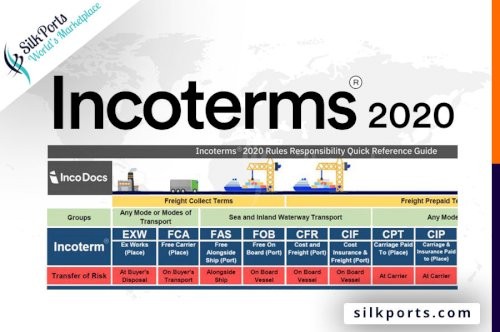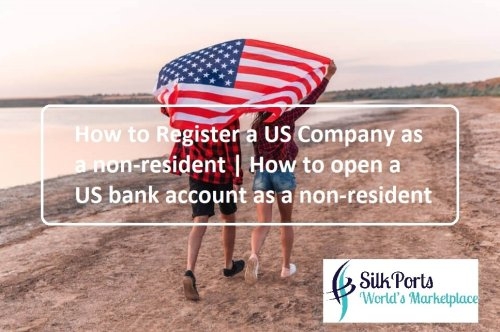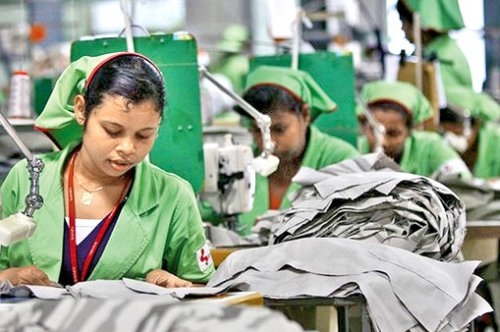
Sri Lanka apparels Industry
The design, manufacture and export of textiles and apparel products is one of the biggest industries in Sri Lanka, and one which plays a key role in advancing the country's economy. The apparel industry of Sri Lanka employs about 15% of the country's workforce, accounting for about half of the country's total exports, and Sri Lanka is among the top apparel-producing countries in the world relative to its population.
Sri Lankan Apparel Industry Capability
Having its ups and downs like any other industry, the Sri Lankan apparel sector has come a long way ever since it started from the bottom, turning out to become the most important income sector for the country’s economy. Starting in the 1950s, Sri Lankan garments were handled by a small number of industrialists. Their main focus was to serve the local demand for day-to-day garments. This protected market was given more exposure with the import barriers that were placed by the end of the 1950s.
As a result, by the 1960s there were 300 categories of industrial products manufactured by local garments. It was also during this time, these products were introduced to the export market.
The recognition gained by the Sri Lankan apparel sector today is purely based on its excellence in speedy delivery and reliability. Serving worldwide supply chains, the sector is also the main centre of production for major brands such as Nike, Speedo, Victoria’s Secret, Triumph, etc. There is a high demand for Sri Lankan apparel in European countries such as the United Kingdom, Italy, Germany, Belgium, and the Netherlands. It also enjoys similar demand from the United States, Canada, China, Japan, Hong Kong, and the United Arab Emirates.
Major Categories of Sri Lankan Apparel
Sri lankan Apparel categories span Sportswear, Lingerie, Loungewear, Bridalwear, Workwear, Swimwear and Childrenswear. These products are manufactured and exported with the flexibility of catering to specific seasons of many countries around the world.USA and the United Kingdom have historically been the largest buyers of Sri Lankan apparel throughout the decades.
Sri Lankan apparel has evolved from traditional exports and tailoring designs to providing sophisticated solutions, creativity and experience in BPO services, Fashion, R&D and Innovation Centers bridging the country’s gap between developing and developed. The country has the highest apparel exports per capita of any exporting nation in the region.
Why Sri Lanka apparels are better than others?
Sri Lanka's crucial apparel industry contributed 32 per cent to the country's gross domestic product (GDP) and 44 per cent to its total exports in 2018. With low wage and cost-effective production, the sector offers sophisticated solutions to the industry's more complex global needs and leverages on design, research and development and innovation. In addition, strict adherence to international labour standards, adoption of ethical production and high-quality workforce transformed the nation into an apparel hub. The sector offers employment to more than 9,90,000 people. Sri Lanka recorded the highest apparel exports per capita of any exporting nation in the region. Major international apparel brands having a manufacturing base in the country include BR Fashion, Ralph Lauren, H&M, GAP, Victoria's Secret and Triumph.
Sri Lanka's overall apparel exports were worth $4,866 million in 2016 and increased by 8.91 per cent to $5,300 million in 2018. A rise of 5.68 per cent was seen in 2018 over 2017. It is expected to reach $5,814.56 million in 2021 with a compounded annual growth rate (CAGR) of 3.13 per cent. The sector accounts for the major part of the country's merchandise exports. The share of apparel exports in total merchandise exports dropped to 42.21 per cent in 2017 from the 45.03 per cent in 2016. The share. Moved up in 2018 to 42.61 per cent and is expected to recover consistently by 2021 and reach 44.37 per cent.
According to the Joint Apparel Association Forum (JAAF), Sri Lankan apparel manufacturers are more focused on a sustainable domestic fabric supply to benefit from the generalised system of preferences plus (GSP) scheme while exporting to the European Union (EU). The country now is not able to meet the country of origin rule. The available domestic fabric is only knitted fabric. The fabric capacity available is not able to fulfil industry demands. Hence, fabric imports have been consistently increasing. The total yearly fabric import has exceeded beyond the $2 billion mark. Whether GSP exists or not, the country's domestic fabric base will ensure sustainability of the apparel industry.
Why should Sri Lankan Apparel choose?
- Sri Lanka is well geared to meet global market demand for fast, high quality ethical fashion products.
- Three decades of experience.
- Environmental friendly factories – world’s first LEED certified Platinum rated production facility.
- Ethical practices–known to the world as a producer of “Garments without Guilt” under the principles ofEthical working conditions, free of child labour, free of forced labour, free of discrimination on any grounds, free of sweatshop practices.
- International reputation as a reliable and a quality manufacturer with a highly competent, skilled and literate workforce.
- Large number of companies that are regional players and have the capacity to provide competitive regional advantage by harnessing regional strengths in the supply chain.
- Focus to improve speed on delivery using strategic location advantage, coupled with the conducive business friendly environment within the country.
- Innovation focused factories which offers superior product development and design resources.
- Investment friendly government policies and strategic shipping advantage.
Top 10 Textiles & Apparel manufacturing companies in Sri Lanka
- Mas.
- Hirdaramani Apparel.
- Brandix Lanka.
- Hela Clothing.
- Star Garment Group.
- Emjay International.
- Foundation Garments.
- Lanka Mount Castle (Pvt).
- Avirate.
- Ceylon Leather Products.
Important Sri Lankan Apparel Industry Statistics
#1. In 2011, the total export income earned by the Sri Lankan apparel industry was valued at $4.2 billion. That accounted for 39.6% of the total export income that was achieved by the country. (Board of Investment)
#2. By 2002, the Sri Lankan apparel industry accounted for 6% of the GDP. It also accounted for one-third of total manufacturing employment, two-thirds of industrial exports, and 30% of industrial production. (Board of Investment)
#3. Apparel manufacturers dominate the Sri Lankan apparel industry. They account for about 90% of the textile and apparel sector, producing several top brands of clothing. (Board of Investment)
#4. In 2011, the Sri Lankan apparel industry employed more than 2830,000 people and indirectly supported the jobs of tens of thousands of others as well. (Board of Investment)
#5. In 2016, the apparel exports had a value of $4.8 billion. (International Trade Administration)
#6. Up to 600,000 jobs are indirectly supported by the Sri Lankan apparel industry, many of which are jobs that are held by women. (Textile Today)
#7. The Sri Lankan apparel industry currently holds a global market share of 1.2%, which has it outside of the top 10 global producers. The industry has the goal to position themselves with the top 10 by the year 2020. (Textile Today)
#8. About 25% of Sri Lanka’s total exports go to the United States and 70% of them are apparel related. Apparel exports to the United States account for 2.8% of the country’s total GDP. (Lakshman Kadirgamar Institute)
#9. A 10% increase in Chinese apparel prices could result in up to a 25% rise in apparel exports to the United States from countries like Sri Lanka. (World Bank)
#10.The government will permit the Sri Lankan apparel industry to invest up to 5% of their average export turnover into foreign entities that are apparel-related.
#11. Many of the major brands, including Abercrombie and Fitch, Liz Claiborne, and Ralph Lauren, have only been involved with the Sri Lankan apparel industry for 10 years or less. (The Island)
#12. Cost of living improvements have altered the landscape of the Sri Lankan apparel industry. Bangladesh has 6 times more global exports with their apparel industry, but they pay $50 less per month than Sri Lanka does as a minimum monthly wage. Workers in Sri Lanka earn a minimum of $120 per month, while workers in Bangladesh earn a minimum of $70.
Sri Lankan Apparel Industry Trends and Analysis
What has held the Sri Lankan apparel industry back in recent years was a loss of GSP Plus status within the European Union. This status was revoked in 2010. That means all textiles, apparel, and garments exported to the EU from Sri Lanka receive full tariff rates. With the status, about 20% of exports from the industry to Europe enter the market with a zero tariff. About 70% of exports receive preferential rates.
The GSP Plus program was reinstituted by the European Union in 2017, which may place the industry on the road to recovery. Without the status, steady declines have occurred in the industry overall. In February 2017, for example, exports were down 2.7% from the year before, valued at just $868 million.
As the industry continues to grow, relationships are going to be the key to unlock a maximum level of success. Relationships with new customers will diversify the export market, which is necessary because of the dependence on U.S. imports. This emphasis will also establish long-term relationships with globally-established brands that can increase the influence of the industry as a whole.
 English
English
 Russian
Russian  Arabic
Arabic  French
French  Español
Español  Turkish
Turkish  German
German 